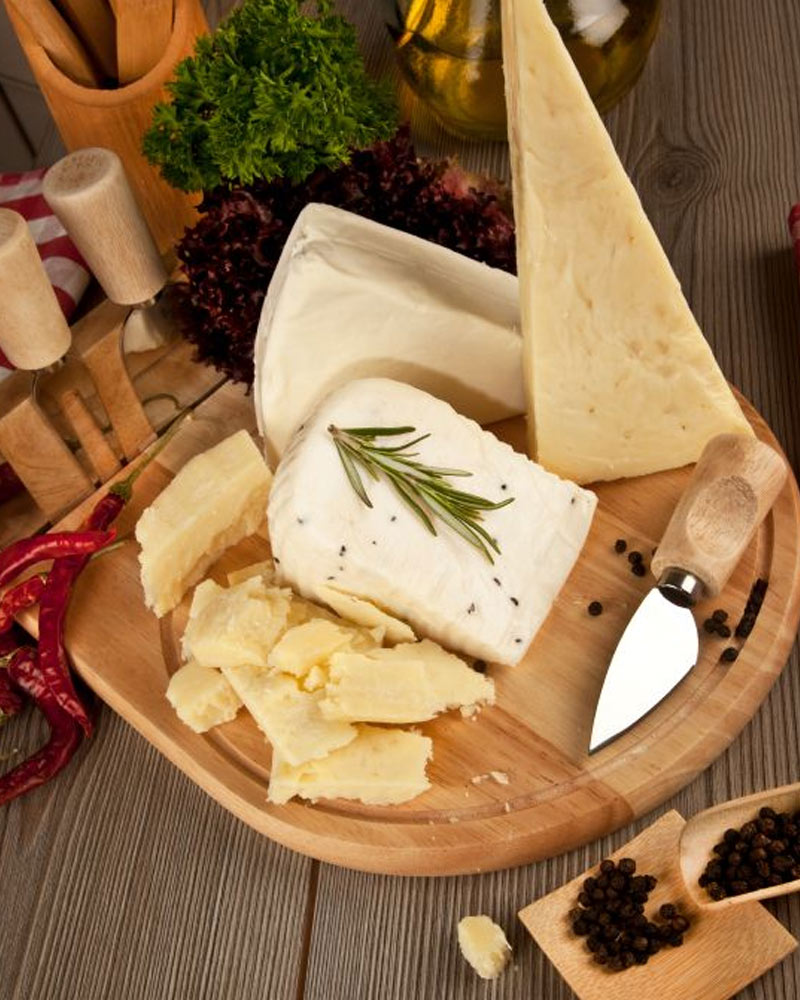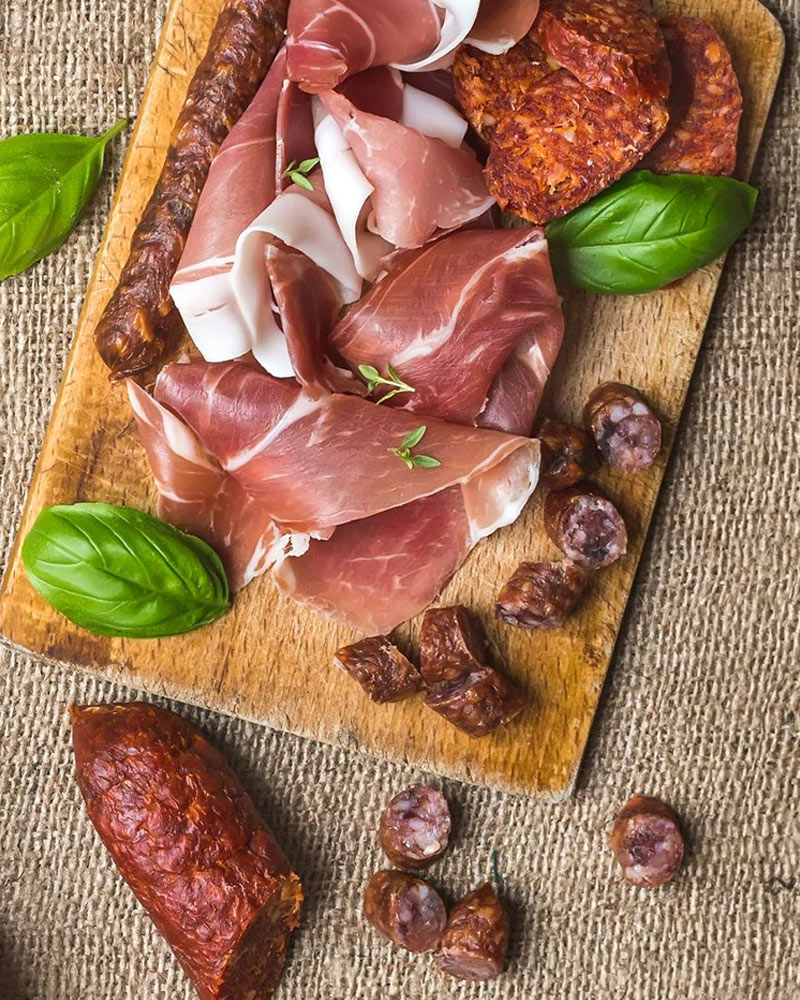Cheese & Charcuterie Basics
Cheese and charcuterie, like wine, is produced in a variety of styles and from different sources. With so many flavors, shapes and textures, it's important to understand the basics of cheese and charcuterie in order to help navigate your way to discovering your favorites.

Dairy 101
BUFFALO'S MILK
Produces largest volume of milk per animal. Some believe buffalo milk to be the best flavor and quality dairy for making cheeses.
Buffalo Mozzarella, Gorgonzola, Parmesan
COW'S MILK
Cows have the highest production of milk. It generally takes 10 poound of cow's milk to make one pound of cheese, perfect for "big wheel" cheeses.
Gouda, Cheddar, Brie, Camembert, Stilton, Comtè
GOAT'S MILK
Goats produce about half as much dairy as cows. With less lactose, goat's milk has a mild and tangy flavor, perfect for specialty and aged cheeses.
Chevre, Bijou, Coupole, Crottin, Brie, Gouda
SHEEP'S MILK
Sheep produce about half as much dairy as goats. With more fat and protein than cow's milk, sheep's milk has a very concentrated flavor.
Manchego, Roquefort, Dante, Feta, Ricotta

Charcuterie 101
Forcemeats
Forcemeats are a mixture of ground, lean meat emulsified with fat. The ingredients are either ground, sieved or puréed together. Common forcemeats are sausages and pâté.
CURED SAUSAGES
Ground meats and salt are encased in a casing tube and either boiled, smoked, or cooked. These are another popular charcuterie item.
Pepperoni, Salami, Mortadella, Sopressata, Capicola, Chorizo, Saucisson Sec
PÂTÉ & TERRINE
Ground meats that are heavily seasoned and placed into a mold to be cooked in a hot water bath. Pâtés are typically made from the finer-textured duck liver, whereas terrines are from coarser forcemeats.
Duck, Goose, Beef, Chicken, Salmon, Turkey
RILLETTES
Often made from pork, the meat is heavily salted and cooked slowly in fat until it is tender enough to be shredded. Once cooled, the fat forms a paste, allowing the rillettes to be used as a spread.
Pork, Salmon, Duck, Goose, Chicken, Rabbit
Salt-Cured Meats
Salt-cured or brined meats use salt as preservation. This is done through osmosis and dehydration, drawing out and replacing the water with salt. The salt is also helpful in halting the fermentation process while denaturing proteins, thus preventing the meat from breaking down and spoiling. Salt-cured and brined meats include prosciutto, bacon, and jamon.
WHOLE-MUSCLE CUTS
Where a whole muscle is salt-cured or brine-cured and later shaved into slices. These are often the most popular form of charcuterie.
Bacon, Prosciutto, Jamón Serrano, Jamón Ibérico de Bellota, Bresaola, Speck